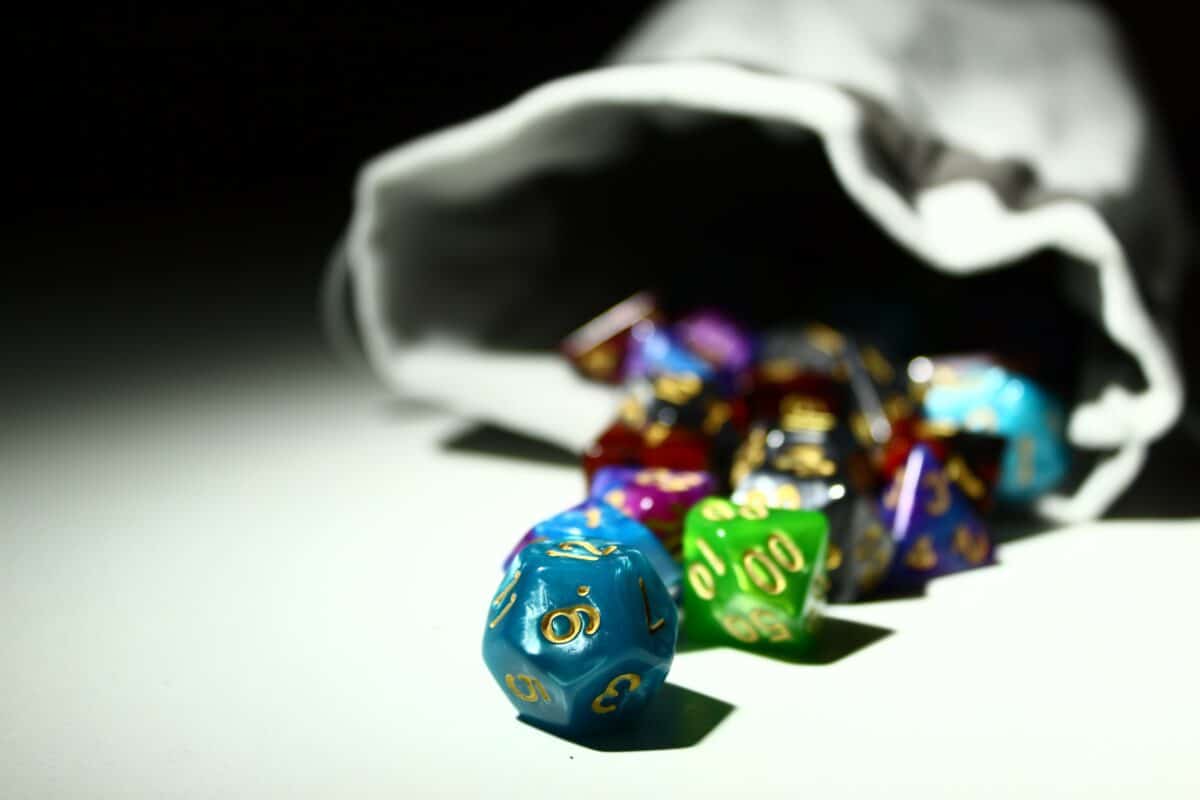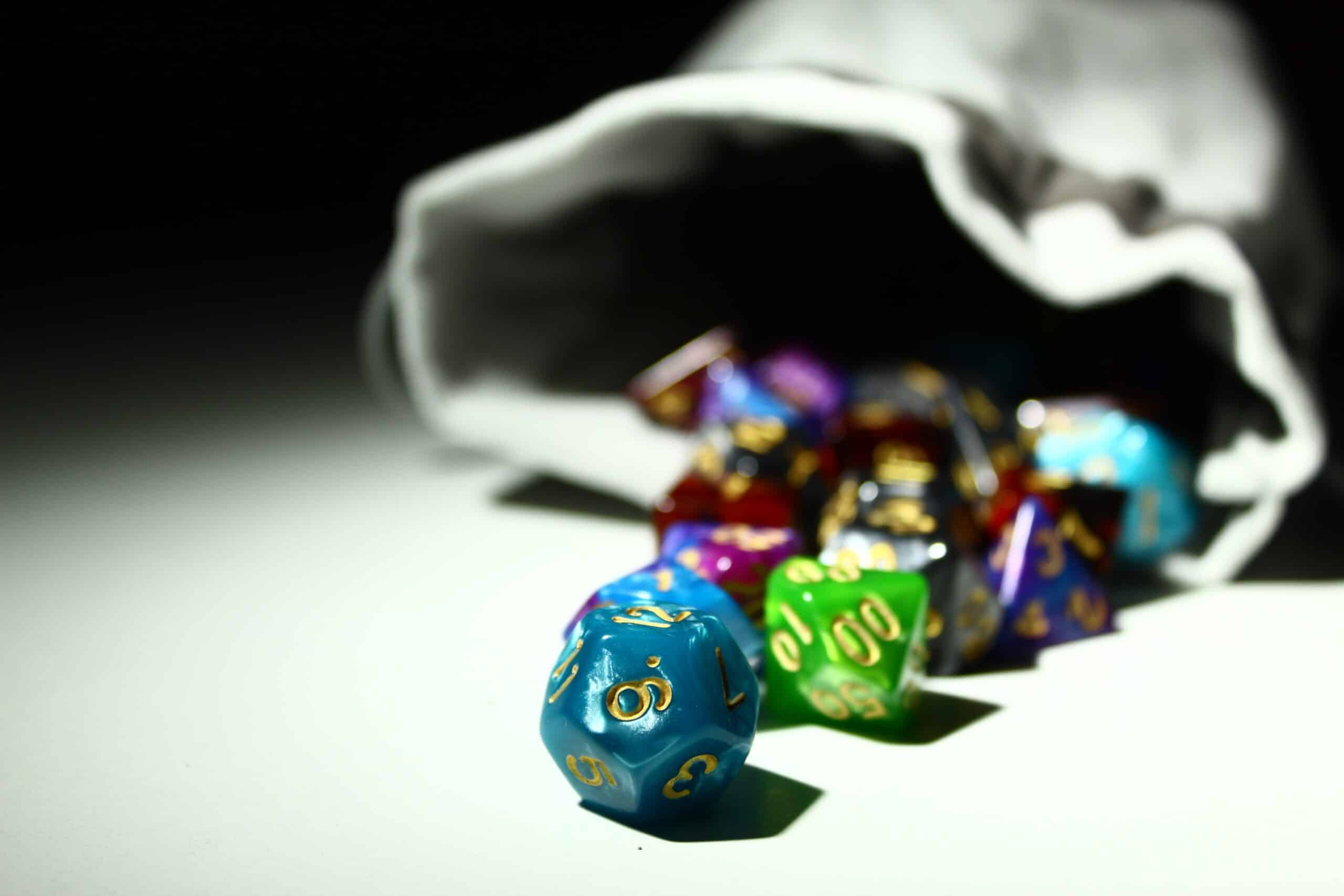If you are brand new to Dungeons and Dragons or other types of roleplaying games and have agreed to be the DM* for the first time at your house, this article is for you!
We’ll discuss how to create a suitable atmosphere using lightning and sound, why you should use a DM screen and which type of equipment that can be useful to have at hand, plus the importance of coffee, tea, and snacks!
Here are five tricks and tips for both beginners and seasoned DMs.
Good luck with running your first DM session!
*DM stands for Dungeon Master. It can also be called GM, which stands for Game Master, while others prefer the term Referee. A DM is a person who is leading the roleplaying session, keeps track of the rules, and presents the narrative and story to the group.
1. Change the lighting in the room
To create a great atmosphere around your roleplaying table, start with lowering the lights in the room.
The best way is to turn off the ceiling light, light a couple of candles, and place them around the room. If you don’t have any candles, or if you are worried about creating a fire hazard – or set off the fire alarm during the middle of the game! – use dimmed light or mood lightning.
You want the room to be cosy and dimly lit, but still functional. Place a couple of extra candles or a small lamp on the gaming table so that people can see their dice and read their characters, and so that you can read your own adventure.
2. Set the mood by using music or soundtracks
Background music is a great way to increase the ambience for a roleplaying session. Keep the volume low, so that it isn’t distracting. (This is especially important if you are gaming online, and it’s a good idea to always double-check if the sound is okay at the beginning of a session.)
You can also play a soundtrack from films that match the type of roleplaying game that you are running. There is also plenty of gaming music or music collection on YouTube that you can stream. Some roleplaying adventures even come with their own soundscape, but you can also put together a list of ambient music or sound effects on Spotify that you can use during your session.
If you want to take it a step further, loop different music for various locations. E.g. use a merry tavern soundtrack from World of Warcraft when the characters are at the local inn, and change it to a more sinister soundtrack when they are exploring a nearby abandoned mine.
3. Why use a DM’s screen?
A DM’s screen is a foldable and laminated screen that consists of several integrated panels. You can buy this type of screen at your local game shop, or order it online. Some DM’s screens are themed around a specific adventure module, while others are more generic. You can also get a custom-engraved wooden screen or build your own.
The inside of the screen generally contains useful information and basic rules that can come in handy, but the main reason to use a DM screen is to hide your notes and dice rolls from the players.
However, you can choose to roll certain dramatic dice rolls openly. For example, rolling the attack dice so that everyone can see the result directly and guess if the red dragon’s attack hit or not is much more rewarding and fun than rolling the dice behind the screen.
Although the DM screen can be used to hide the dice results, there are instances when you might want to consider rolling the dice well in advance if you don’t want to tip the players off. For example, if the characters enter a part of the dungeon and you roll a couple of dice and then tell the players “That the square stone room looks perfectly ordinary”, most players suspect that they missed a trap, a hidden passage, or a skulking monster.
But you can also use the DM screen to your advantage by randomly rolling dice behind the screen for no reason whatsoever, except for making your players a little bit paranoid and on edge.

4. What to bring to the table: Books, maps, miniatures, and more
To prepare a roleplaying session, you will need rulebooks, your adventure, a notebook, pencils, and paper. It is also good to bring spare character sheets, extra dice, pens, and scrap paper for impromptu map sketches or secret notes.
Some DMs prefer to print elaborate battle maps and use miniatures, others rely on the so-called ‘Theatre of the mind’ concept, which is when the players get to envision what the DM describes in their mind. You can also use a combination of both, which means that you most of the time let the players use their own imagination, but draw a rough pencil map to describe a more complicated battle area.
5. The importance of snacks!
No roleplaying game session is complete without snacks and beverages! If you have decided to play D&D at your house, it is a good idea to stock up on coffee, tea, and lemonade.
For most sessions, people will bring their own snacks. Usually, it is complicated enough to try to schedule a date and time for a D&D session, so don’t make it more complex by writing an intricate snack shopping list. However, no one is going to complain if you bring extra chocolate biscuits or crisps to the table.
If you are gaming with a new group of players – check for allergies! Although everyone will definitively recall the session where they spent a night at the ER after a severe nut allergy shock, it is much more rewarding to remember the time when they had to defend the village’s tavern from nasty goblins!

